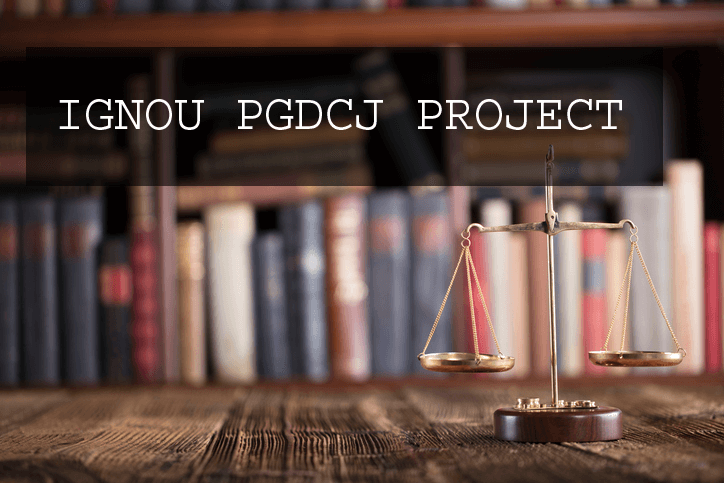Post Graduate Diploma in Criminal Justice is also known as PGDCJ is course offered by Ignou University aiming to create a person who is profession and well informed in the area of criminal justice. There is a subject called MLEP 017 for which student of needs to submit the IGNOU PGDCJ project.
MLEP 17 project is the systematic process of collecting and analyzing information or data in order to increase our understanding of the phenomenon with which we are concerned or interested. Project research is not a mere restating of previously known facts.
Project research is the process of finding new information or pitching a new or fresh idea with the available information, by looking for data. The most important characteristic of a formal research is that it involves the interpretation of data to draw conclusions. If you are looking to become one of the best criminal lawyers in Delhi then PGDCJ is the best course for you.
What is a IGNOU PGDCJ Project?
Legal research is defined as the process of identifying and retrieving information that is required for finding a solution to a legal problem. The purpose of legal research of PGDCJ is to find “authority” that will aid in supporting legal decision-making.
The main idea behind IGNOU PGDCJ Project is to finding the solution of the existing problem with an analysis of the facts the communication and application of the results of the investigation. However, depending upon the legal system involved, the approach to performing the research may vary. Though there is no hard and fast rule to be followed while doing legal research, there is a basic guide that may be generally be followed by researchers.
To conduct a Legal Research Research Methodology is as follows:
- Selection of a topic
- Discovering primary sources of law – In simple English primary data is the data which must be collected by the project writers or researchers with the help of conducting surveys, interviews or experiment
- Discovering secondary sources of law -Secondary data is the data which is collected from the other experiences, survey or interviews. Examples are, law reviews, legal dictionaries, legal treatises, legal encyclopedias, etc.)
- Finding non-legal sources for supporting or investigative information
- Taking notes
- Conducting a preliminary analysis of facts and start framing questions for your IGNOU PGDCJ Project
- Writing hypothesis and choosing research questions from the initial analysis
- Consulting secondary sources
- Preparing First Draft of research
- Evaluation of the research
- Locating the primary authority
- Re-evaluation of the research
- Reviewing and updating the research
- Proofreading
The ideal length of your term end paper must be approximately between forty to fifty pages. Your paper must be in the following format:
- Title page
- Declaration page
- Acknowledgement
- Contents page
- List of tables, figures, abbreviations
- Chapters of the paper
- Chapter 1 should be called ‘Introduction’ and must state the purpose of your Ignou MLEP project clearly. You must explain briefly the major issues you plan to cover in your project work and why readers should be interested in your topic. Once you will finish the introduction part write about the rational of the study or significance of the study and statement of the problem. Then comes the main part of the project which is objectives. Objectives of the study defines that on what objectives you want need the You must also state your research problem and hypothesis while introducing your paper. Chapter 2 is totally based on the secondary study in which you have to mention the review of related literature. These are the studies which already done by the other authors . Thereafter, you can continue with the rest of the chapters which would form the body of your project. This is where you should present all your arguments to support your hypothesis. The final chapter of IGNOU PGDCJ Project should be called ‘Conclusion’. The conclusion of the paper is the most valuable part as it is the only original contribution you offer in your project. It manifests the value of your research as well as your understanding of the material that you have presented. Hence, it must briefly restate the research problem and summarize the main findings and implications of the study. You must explain why you have come to this particular conclusion.
- References
- Tables and figures
- Appendices






Leave A Comment